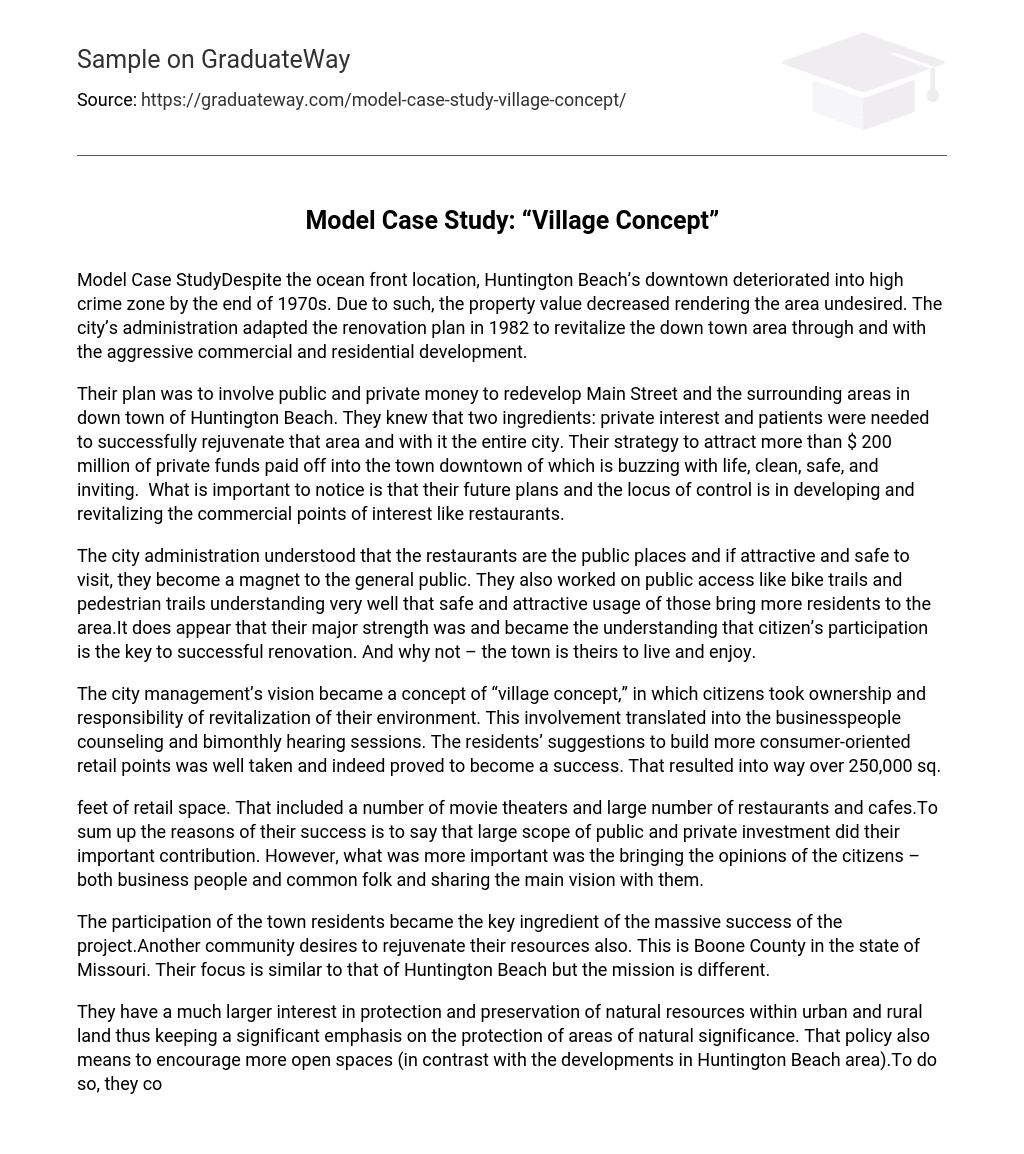Model Case StudyDespite the ocean front location, Huntington Beach’s downtown deteriorated into high crime zone by the end of 1970s. Due to such, the property value decreased rendering the area undesired. The city’s administration adapted the renovation plan in 1982 to revitalize the down town area through and with the aggressive commercial and residential development.
Their plan was to involve public and private money to redevelop Main Street and the surrounding areas in down town of Huntington Beach. They knew that two ingredients: private interest and patients were needed to successfully rejuvenate that area and with it the entire city. Their strategy to attract more than $ 200 million of private funds paid off into the town downtown of which is buzzing with life, clean, safe, and inviting. What is important to notice is that their future plans and the locus of control is in developing and revitalizing the commercial points of interest like restaurants.
The city administration understood that the restaurants are the public places and if attractive and safe to visit, they become a magnet to the general public. They also worked on public access like bike trails and pedestrian trails understanding very well that safe and attractive usage of those bring more residents to the area.It does appear that their major strength was and became the understanding that citizen’s participation is the key to successful renovation. And why not – the town is theirs to live and enjoy.
The city management’s vision became a concept of “village concept,” in which citizens took ownership and responsibility of revitalization of their environment. This involvement translated into the businesspeople counseling and bimonthly hearing sessions. The residents’ suggestions to build more consumer-oriented retail points was well taken and indeed proved to become a success. That resulted into way over 250,000 sq.
feet of retail space. That included a number of movie theaters and large number of restaurants and cafes.To sum up the reasons of their success is to say that large scope of public and private investment did their important contribution. However, what was more important was the bringing the opinions of the citizens – both business people and common folk and sharing the main vision with them.
The participation of the town residents became the key ingredient of the massive success of the project.Another community desires to rejuvenate their resources also. This is Boone County in the state of Missouri. Their focus is similar to that of Huntington Beach but the mission is different.
They have a much larger interest in protection and preservation of natural resources within urban and rural land thus keeping a significant emphasis on the protection of areas of natural significance. That policy also means to encourage more open spaces (in contrast with the developments in Huntington Beach area).To do so, they constructed public groups called The Boone County Smart Growth Coalition function of which to process public input and to enforce the decision-making in agreement with the development’s mission. Since the mission statement is different and contrasting with the one of Huntington Beach’s mission we cannot judge the characteristics of either development as good or bad, as better or worse, as more or less effective.
They are just different for the purposes are different, for the communities are different.





